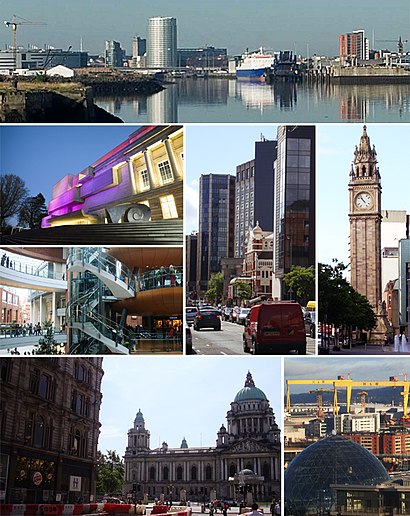Directions to Belfast with public transportation
The following transport lines have routes that pass near Belfast
How to get to Belfast by bus?
Click on the bus route to see step by step directions with maps, line arrival times and updated time schedules.
Bus stops near Belfast
- Cliftonville Road (Academy), 2 min walk,
- Kane Cottage, 3 min walk,
- Edlingham Street, 5 min walk,
Bus routes to Belfast
- 12A, City Centre - Carr's Glen,
- 1A, City Centre - Carnmoney - Fairview Road - Glenville,
- 1C, City Centre - New Mossley - Fairview Road - Glenville,
- 1E, City Centre - Roughfort,
- 1F, City Centre - Mayfield - Blackrock,
- 1G, City Centre - New Mossley - Manse Way,
- 1J, City Centre - Royal Mail (Mallusk),
- 1D, City Centre - New Mossley - Mossley Glade,
What are the nearest stations to Belfast?
The nearest stations to Belfast are:
- Cliftonville Road (Academy) is 91 meters away, 2 min walk.
- Kane Cottage is 156 meters away, 3 min walk.
- Edlingham Street is 355 meters away, 5 min walk.
Which bus lines stop near Belfast?
These bus lines stop near Belfast: 12A, 1A, 1D, 1E, 1F.
What’s the nearest bus stop to Belfast?
The nearest bus stop to Belfast is Cliftonville Road (Academy). It’s a 2 min walk away.
What time is the first bus to Belfast?
The 1A is the first bus that goes to Belfast. It stops nearby at 05:15.
What time is the last bus to Belfast?
The 12A is the last bus that goes to Belfast. It stops nearby at 23:09.
See Belfast on the map
Public Transportation to Belfast
Wondering how to get to Belfast, United Kingdom? Moovit helps you find the best way to get to Belfast with step-by-step directions from the nearest public transit station.
Moovit provides free maps and live directions to help you navigate through your city. View schedules, routes, timetables, and find out how long does it take to get to Belfast in real time.
Looking for the nearest stop or station to Belfast? Check out this list of stops closest to your destination: Cliftonville Road (Academy); Kane Cottage; Edlingham Street.
Bus: 12A, 1A, 1D, 1E, 1F, 1C, 1G.
Want to see if there’s another route that gets you there at an earlier time? Moovit helps you find alternative routes or times. Get directions from and directions to Belfast easily from the Moovit App or Website.
We make riding to Belfast easy, which is why over 1.5 million users, including users in Belfast, trust Moovit as the best app for public transit. You don’t need to download an individual bus app or train app, Moovit is your all-in-one transit app that helps you find the best bus time or train time available.
For information on prices of bus, costs and ride fares to Belfast, please check the Moovit app.
Use the app to navigate to popular places including to the airport, hospital, stadium, grocery store, mall, coffee shop, school, college, and university.
Belfast Address: Duncairn Avenue, Belfast BT14 6BP, United Kingdom street in Belfast

Attractions near Belfast
How to get to popular places in Northern Ireland with public transport
Get around Belfast by public transport!
Travelling around Belfast has never been so easy. See step by step directions as you travel to any attraction, street or major public transport station. View bus and train timetables, arrival times, service alerts and detailed routes on a map, so you know exactly how to get to anywhere in Belfast.
When travelling to any destination around Belfast use Moovit's Live Directions with Get Off Notifications to know exactly where and how far to walk, how long to wait for your line , and how many stops are left. Moovit will alert you when it’s time to get off — no need to constantly re-check whether yours is the next stop.
Wondering how to use public transport in Belfast or how to pay for public transport in Belfast? Moovit public transport app can help you navigate your way with public transport easily, and at minimum cost. It includes public transport fees, ticket prices, and costs. Looking for a map of Belfast public transport lines? Moovit public transport app shows all public transport maps in Belfast with all bus routes and stops on an interactive map.
Belfast has 1 transport type(s), including: bus, operated by several transport agencies, including Translink
